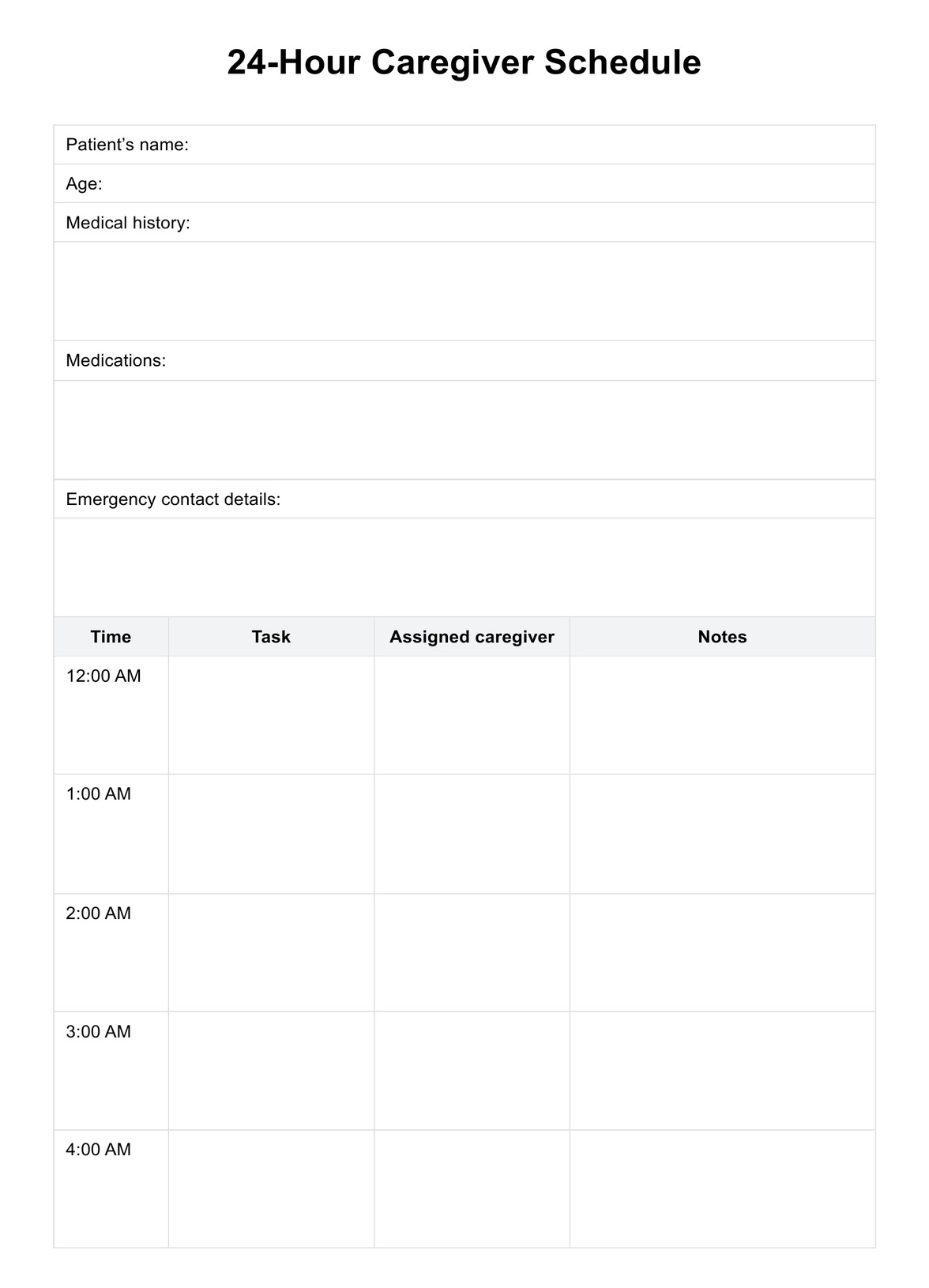A live-in caregiver resides with the individual requiring care and provides assistance as needed throughout the day and night. In contrast, a 24-hour caregiver may work in shifts, with multiple caregivers providing continuous care round the clock.

24-hour Caregiver Schedule Template
Download Carfepatron's free PDF template and example for a 24-hour caregiver schedule. Stay organized and ensure proper care.
Use Template
24-hour Caregiver Schedule Template Template
Commonly asked questions
A caregiving routine is a structured schedule that outlines the tasks and responsibilities caregivers perform daily to support the individual's needs, including personal care, medication management, and household chores.
To make time for yourself as a caregiver, prioritize self-care activities such as exercise, relaxation, and socialization during periods when the individual is resting or receiving assistance from another caregiver or family member.
EHR and practice management software
Get started for free
*No credit card required
Free
$0/usd
Unlimited clients
Telehealth
1GB of storage
Client portal text
Automated billing and online payments











